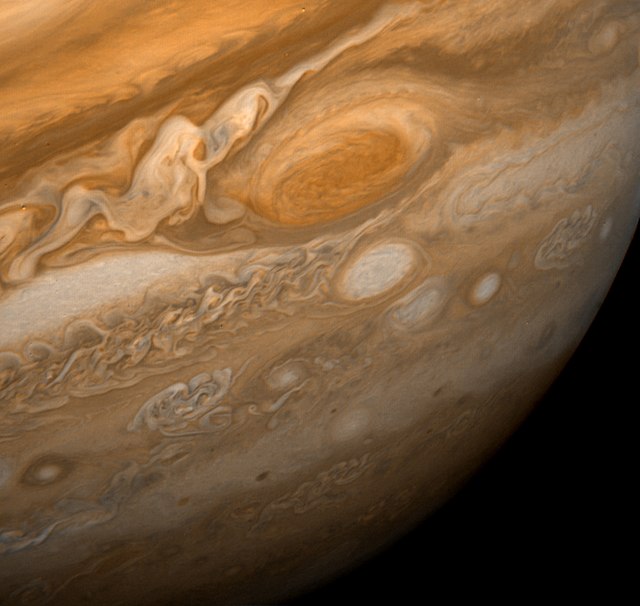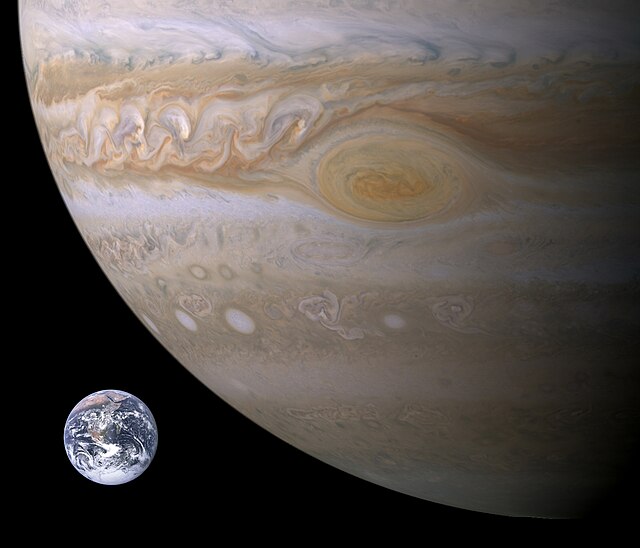The Great Red Spot is a persistent high-pressure region in the atmosphere of Jupiter, producing an anticyclonic storm that is the largest in the Solar System. It is the most recognizable feature on Jupiter, owing to its red-orange color whose origin is still unknown. Located 22 degrees south of Jupiter's equator, it produces wind-speeds up to 432 km/h (268 mph). Observations from 1665 to 1713 are believed to be of the same storm; if this is correct, it has existed for at least 359 years. It was next observed in September 1831, with 60 recorded observations between then and 1878, when continuous observations began.
Donato Creti's 1711 painting "Jupiter", the first depiction of the Great Red Spot as red
A wide view of Jupiter and the Great Red Spot as seen from Voyager 1 in 1979.
Size of the Earth compared to the Great Red Spot
Winds in the Great Red Spot as analyzed from Hubble's data. Red means faster wind, blue means slower wind.
An anticyclonic storm is a storm with a high-pressure center, in which winds flow in the direction opposite to that of the flow above a region of low pressure. Unlike a cyclonic storm, anticyclonic storms are typically associated with fair weather and stable atmospheric conditions. On other planets or in rare cases on Earth, anticyclones can contribute to inclement weather. Examples include Hartmut, which brought a blizzard to the British Isles in 2018, Jupiter, and Neptune's persistent anticyclonic storms.
The Great Red spot on Jupiter is considered as an Anticyclone storm system.
Anticyclonic cloud system taken above the Pacific Ocean by the 41-B crew.






